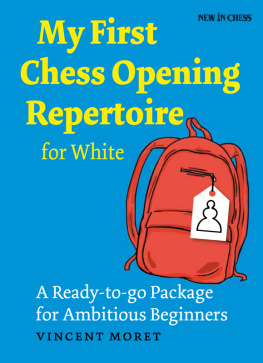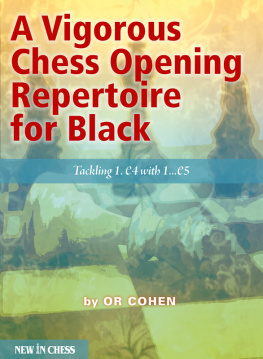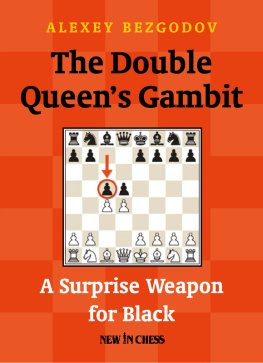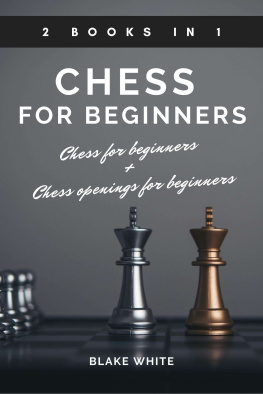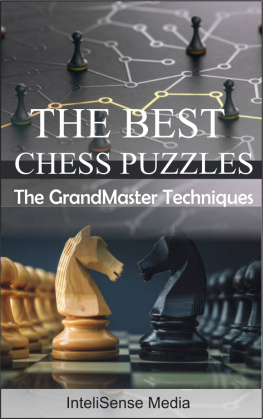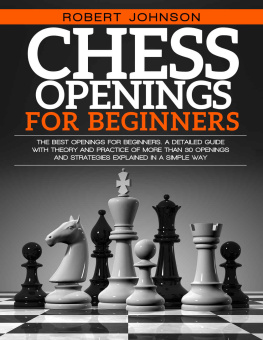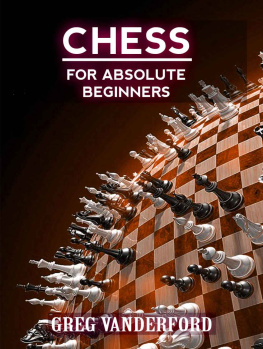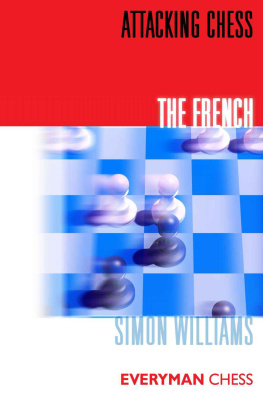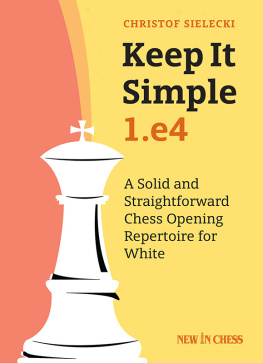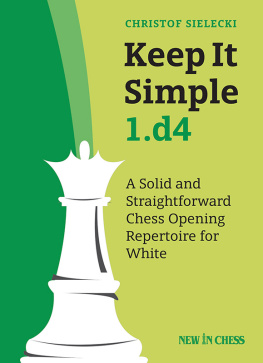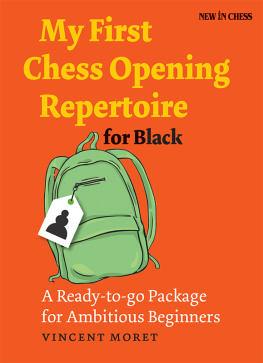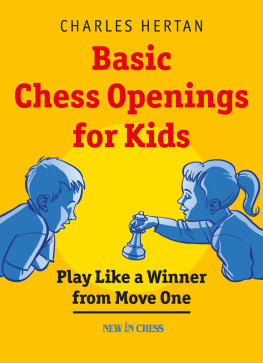Vincent Moret - My First Chess Opening Repertoire for White: A Turn-Key Package for Ambitious Beginners
Here you can read online Vincent Moret - My First Chess Opening Repertoire for White: A Turn-Key Package for Ambitious Beginners full text of the book (entire story) in english for free. Download pdf and epub, get meaning, cover and reviews about this ebook. year: 2016, publisher: New In, genre: Home and family. Description of the work, (preface) as well as reviews are available. Best literature library LitArk.com created for fans of good reading and offers a wide selection of genres:
Romance novel
Science fiction
Adventure
Detective
Science
History
Home and family
Prose
Art
Politics
Computer
Non-fiction
Religion
Business
Children
Humor
Choose a favorite category and find really read worthwhile books. Enjoy immersion in the world of imagination, feel the emotions of the characters or learn something new for yourself, make an fascinating discovery.
- Book:My First Chess Opening Repertoire for White: A Turn-Key Package for Ambitious Beginners
- Author:
- Publisher:New In
- Genre:
- Year:2016
- Rating:4 / 5
- Favourites:Add to favourites
- Your mark:
- 80
- 1
- 2
- 3
- 4
- 5
My First Chess Opening Repertoire for White: A Turn-Key Package for Ambitious Beginners: summary, description and annotation
We offer to read an annotation, description, summary or preface (depends on what the author of the book "My First Chess Opening Repertoire for White: A Turn-Key Package for Ambitious Beginners" wrote himself). If you haven't found the necessary information about the book — write in the comments, we will try to find it.
Vincent Moret: author's other books
Who wrote My First Chess Opening Repertoire for White: A Turn-Key Package for Ambitious Beginners? Find out the surname, the name of the author of the book and a list of all author's works by series.
My First Chess Opening Repertoire for White: A Turn-Key Package for Ambitious Beginners — read online for free the complete book (whole text) full work
Below is the text of the book, divided by pages. System saving the place of the last page read, allows you to conveniently read the book "My First Chess Opening Repertoire for White: A Turn-Key Package for Ambitious Beginners" online for free, without having to search again every time where you left off. Put a bookmark, and you can go to the page where you finished reading at any time.
Font size:
Interval:
Bookmark:
My First Opening Repertoire for White Vincent MoretMy First Opening Repertoire for WhiteA Ready-to-go Package for Ambitious BeginnersNew In Chess 2016 2016 New In Chess Published by New In Chess, Alkmaar, The Netherlands www.newinchess.com Translated from Mon premier rpertoire douvertures avec les blancs (Moret, Olibris 2015) by Tony Kosten All rights reserved. No part of this book may be reproduced, stored in a retrieval system or transmitted in any form or by any means, electronic, mechanical, photocopying, recording or otherwise, without the prior written permission from the publisher. Cover design: Volken Beck Supervisor: Peter Boel Proofreading: Ren Olthof Production: Anton Schermer Have you found any errors in this book? Please send your remarks to and implement them in a possible next edition. ISBN: 978-90-5691-633-6 Explanation of SymbolsThe chessboard with its coordinates:
 White to move
White to move  Black to move King Queen Rook Bishop Knight ! good move !! excellent move ? bad move ?? blunder !? interesting move ?! dubious move
Black to move King Queen Rook Bishop Knight ! good move !! excellent move ? bad move ?? blunder !? interesting move ?! dubious move  White stands slightly better
White stands slightly better  Black stands slightly better
Black stands slightly better  White stands better
White stands better  Black stands better + White has a decisive advantage + Black has a decisive advantage = balanced position unclear
Black stands better + White has a decisive advantage + Black has a decisive advantage = balanced position unclear  counterplay
counterplay  compensation # mate corr. correspondence jr junior sr senior Introduction One day, at the end of a group lesson on basic rook endgame positions that I had just given at my club, one of my students, Hocine, aged about ten, came up to ask me: But what is the point of knowing the Lucena or Philidor positions? I never get that far. Often I lose before the ending because I didnt know the opening.
compensation # mate corr. correspondence jr junior sr senior Introduction One day, at the end of a group lesson on basic rook endgame positions that I had just given at my club, one of my students, Hocine, aged about ten, came up to ask me: But what is the point of knowing the Lucena or Philidor positions? I never get that far. Often I lose before the ending because I didnt know the opening.
Teach us the Sicilian Defence instead, it will be more useful. Of course, I tried to make him understand that if he lost it was not always, or even often, because of his shortcomings in the opening. I also explained to him that learning the endgames was essential to progress in the other phases of the game, and that the positions of Philidor or Lucena (to name but these two) should be part of the basic knowledge of any chess player, in much the same way that a musician must inevitably study the works of Mozart and Beethoven, sooner or later. However, I came to realize that I had great difficulty in making him see reason. Meanwhile Nicolas, another of my ten-year-old students, regularly arrives at classes with a whole bunch of new names of openings that he gleaned here and there on the internet, and that he proudly displays to his club mates. They remain amazed by all these baroque-sounding opening names, and they have a deep respect for his encyclopaedic knowledge.
For my part, I try to behave like a teacher by explaining to Nicolas that his intellectual curiosity is commendable, but that knowledge of the Durkin Attack, the Elephant Gambit or the Mexican Defence, as exciting as they might be, has a rather limited practical interest at the board. Hocine and Nicolas are certainly not isolated examples. Many youngsters are convinced that knowledge of opening theory can be used to measure, like a barometer, the strength of a chess player. If hes stronger than me, its simply because he knows more openings!. We rarely hear a competitor let alone a youngster complain of losing because he does not know how to play queen endgames or because he does not master the subtleties of the pawn structure. The opening has indeed always had a sort of fascination for chess players.
One only has to observe that most competitive players, whatever their level, devote the bulk of their work to it, and for this they can count on the abundant chess literature. More has been written about the initial phase of the game than about any other area of chess, whether it is the middlegame, the endgame, the history or the strategy. Unfortunately, very often another parallel point is clear: many players, among those who embark on competition, spend a considerable time studying the openings, but do not get their moneys worth. Some of them arrive at the chessboard swamped with variations that they have memorized beyond the 20th move at times, but are completely baffled when their opponent plays a bad move that is not part of their repertoire. In fact, they have learned without really understanding. For the last twenty years I have had the pleasure every day that passes I am convinced that it is one to accompany young players as they progress, whether in my club or within the French team that Ive supervised for twelve years.
Hocine, Nicolas, and many other students both young and old have asked me, sometimes insistently, to write down all of our work on the openings in the form of a book. It was with some reluctance at first, because I did not really see what I could add to everything that had already been written on the subject, but I did write it, and now I make it available to the public. Another book on the openings, one might think at first. I have, however, the weakness to believe that this book will be original and that it will stand out from most of the others. At least in its approach, and above all because of the audience for which it is intended. Its public, first of all.
Some films are forbidden to those under 16 years old. I would have wanted to say, at first, that this book was only for youngsters. However, as age is obviously not involved in progress at chess, I should really say that it is forbidden to players above a certain level. More seriously, this book is not intended to prepare masters, or even candidate masters (at least not right away), but to bring ideas and points of reference to players young and less young alike who engage in competitions and are not sure where to start studying openings. The primary objective of this book is just to help these players by offering a reliable and efficient repertoire that they can assimilate without spending too much time on it, and above all which emphasizes understanding over memorization. This book will also be useful for organizers and trainers of clubs who do not feel competent when they have to teach openings.
Original in its approach, next. Those who leaf through this book hoping to find the latest fashionable novelties from the Najdorf or Grnfeld may close it. In the pages that follow there are no major theoretical lines and no 2Aa431 variations, but a collection of complete games. Far more than being able to recite the first ten moves of an opening by heart, it is important to know the typical middlegame plans that result from this opening, and it is only by studying complete games that you can discover these. I have made the choice to select games from young players, whenever possible, rather than games from grandmasters. It is in this sense that this work will differ from most other treaties on the openings.
If I have made such a choice, it is for at least two reasons: 1. What would I have to add to the games of grandmasters that have already been analysed by illustrious players and that can be found in many other publications? 2. It seems profitable, at least at first, to study the games of children and enthusiasts, with their characteristic faults, rather than those of grandmasters, albeit often free of major mistakes but sometimes a little difficult to grasp for the layman. Obviously, it is impossible to study an opening without drawing on the experience of the best players. This is why some games from great champions will be included in the collection. This book is designed in the form of a repertoire.
Next pageFont size:
Interval:
Bookmark:
Similar books «My First Chess Opening Repertoire for White: A Turn-Key Package for Ambitious Beginners»
Look at similar books to My First Chess Opening Repertoire for White: A Turn-Key Package for Ambitious Beginners. We have selected literature similar in name and meaning in the hope of providing readers with more options to find new, interesting, not yet read works.
Discussion, reviews of the book My First Chess Opening Repertoire for White: A Turn-Key Package for Ambitious Beginners and just readers' own opinions. Leave your comments, write what you think about the work, its meaning or the main characters. Specify what exactly you liked and what you didn't like, and why you think so.

